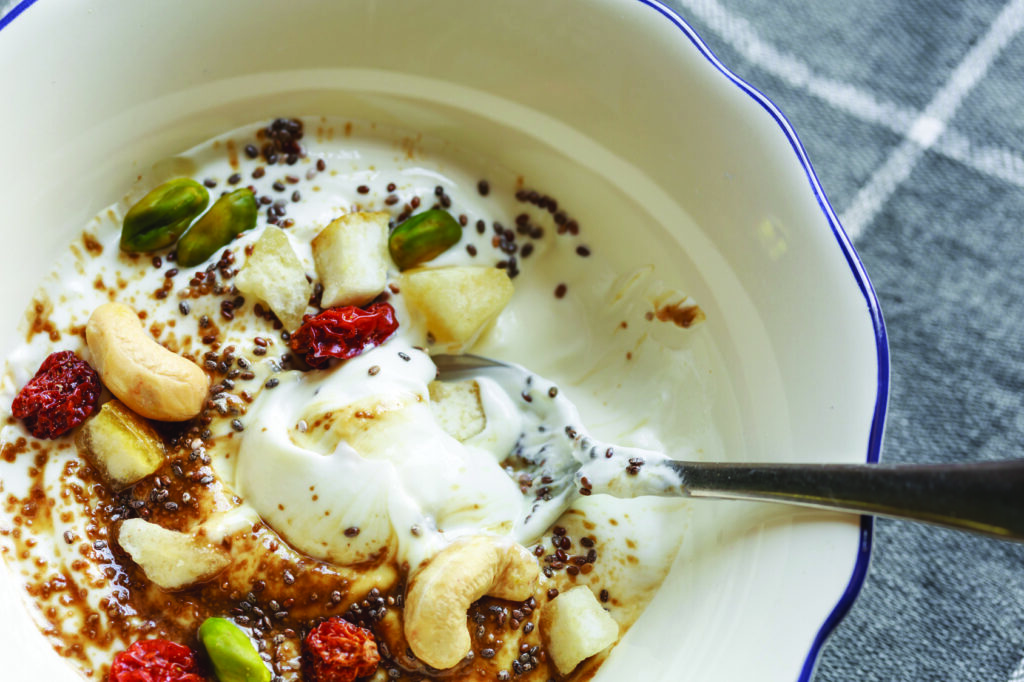Step right up ladies and gents and see what Dr. Doodad’s miracle elixir can do. This one bottle cures pimples and piles, aches and acne, cancer and calluses, and makes you irresistible to the opposite sex. And all for just a dollar.
Sounds too good to be true, doesn’t it? It was. Fads and fashions come and go and it’s the same for food. Some “in” foods are really good for you. Some others . . . not so much.
Grapes seeds are fashionable, not because they taste good but because of what they are reported to do for you. According to healwithfood.org, grape seeds are “packed with essential fatty acids, amino acids, and powerful flavonoids (such as proanthocyanidins), these little bitter seeds have been associated with a whole slew of health benefits. Eating grape seeds on a regular basis may, for example, improve cardiovascular health, reduce leg swelling and varicose veins, provide some protection against certain types of cancer, offer weight loss benefits, treat depression, and even fight yeast infections caused by Candida. In addition, thanks to their remarkably strong antioxidant properties, grape seeds might (at least in theory) help fight certain skin conditions— such as inflammatory acne, psoriasis, and premature wrinkling of the skin— and some more serious health complications such as asthma, joint inflammation in rheumatoid arthritis patients, and problems related to eye health.”
The University of Maryland says, “Vitamin E, flavonoids, linoleic acid, and OPCs are highly concentrated in grape seeds. These compounds can also be found in lower concentrations in the skin of the grape. OPCs are also found in grape juice and wine, but in lower concentrations.” OPCs are oligomeric proanthocyanidin complexes, in case you were wondering. But, there’s a catch: to get the benefit of the grape seeds, you have to chew them.
One thing to keep in mind when shopping is that most grapes in the store are seedless. They taste good, but don’t have the tiny nubs of health in the center.
Remember the Chia Pets from a few years ago? Okay, a lot of years ago. They are still around and in new shapes. Chia seeds, though, are bigger than clay pets were. Chia seeds, from the plant Salvia hispanica, come from Central America and were a staple in the diet of Aztecs and Mayans.
The story goes that the tiny seeds are so full of energy that messengers could run a whole day eating just a handful. Unfortunately, none of them are around now to tell us if it’s true.
Like the miracle tonic, chia seeds are touted as relief or cures for all sorts of maladies, including skin problems, colds and flu, lack of energy and stamina, insulin resistance, and joint inflammation. Some studies suggest that chia seeds may help lower high blood pressure and reduce the risk of coronary heart disease, heart attack, and stroke.
Experts warn that you shouldn’t go nuts with chia seeds. Two tablespoons a day, whole or ground, is about the maximum you should have, with plenty of water. Ground seeds and water turn into a sort of yucky gel many people find hard to take. No one said that they taste good. Soak the seeds in water until a gel is formed and use that as a thickening agent on soups or stews, added near the end of cooking.
Try toasting some in a dry frying pan and sprinkle over salads. Remember, they can be constipating so have plenty of liquid. Whirr some soaked seeds and the gel they make with fresh or frozen fruit to come up with a sugarless fruit jam. It’s great in oatmeal or yogurt.
Pomegranates are in season, just in time for the holidays. They are a fascinating fruit, all those seeds separated by bitter membranes jammed into a leathery skin. Some say pomegranates, not apples, were the forbidden fruit in the Garden of Eden.
Thanks to juice sold in stores, you don’t have to fight to get the good stuff out. But whole seeds are so pretty in dishes of spinach, green beans or salad. Watch for coupons in weekend papers.
Why should we eat them? They are rich in antioxidants including, polyphenols, such as tannins and anthocyanins. In fact, pomegranates may have even more antioxidant power than cranberry juice or green tea, according to Karen Collins, MS, RD, CDN, a nutrition advisor for the American Institute for Cancer Research.
Here’s a recipe for a quick punch using pomegranate juice:
Pomegranate Punch
1/2 cup pomegranate juice
1/2 cup freshly squeezed orange juice
1/2 cup diet grapefruit juice soda (or diet 7 UP)
Mix everything in a glass and add ice.
Yield: 1 serving
Per serving: 125 calories, 1 g protein, 30 g carbohydrate, 0.4 g fat, 0 g saturated fat, 0 mg cholesterol, 0.4 g fiber, 4 mg sodium. Calories from fat: 3%. Recipe provided by Elaine Magee.
There is something to remember when considering a “super food” or a miracle elixir. Take them both with a grain of salt, and remember— a balanced diet of fruits, vegetables, grains, protein, and dairy is the best way to ensure your body gets all the nutrients it needs while maintaining a healthy weight.
CREDIT
story by TRENT ROWE, Food Editor
